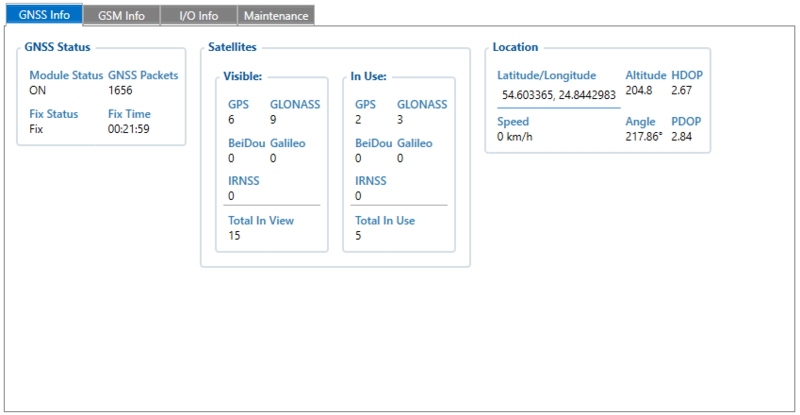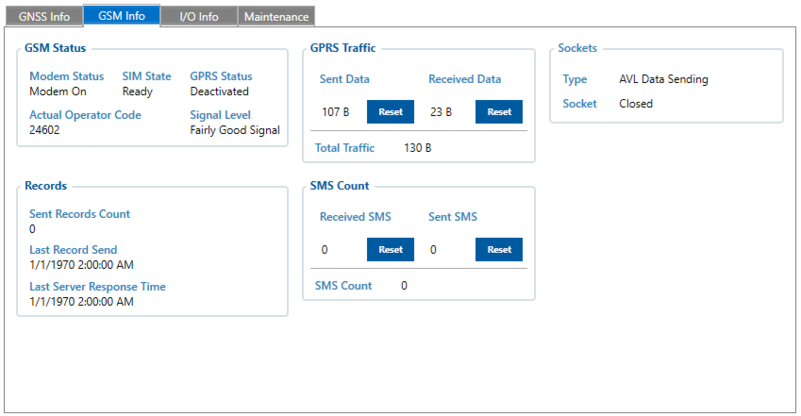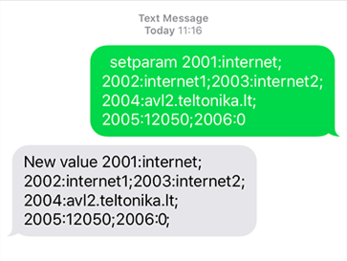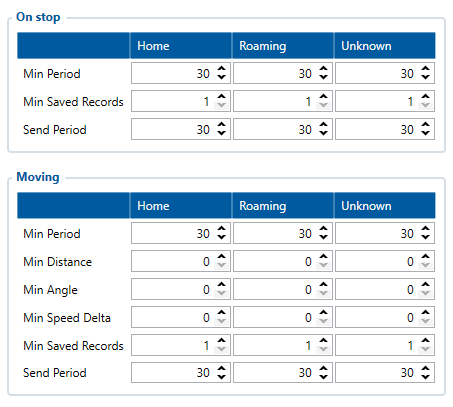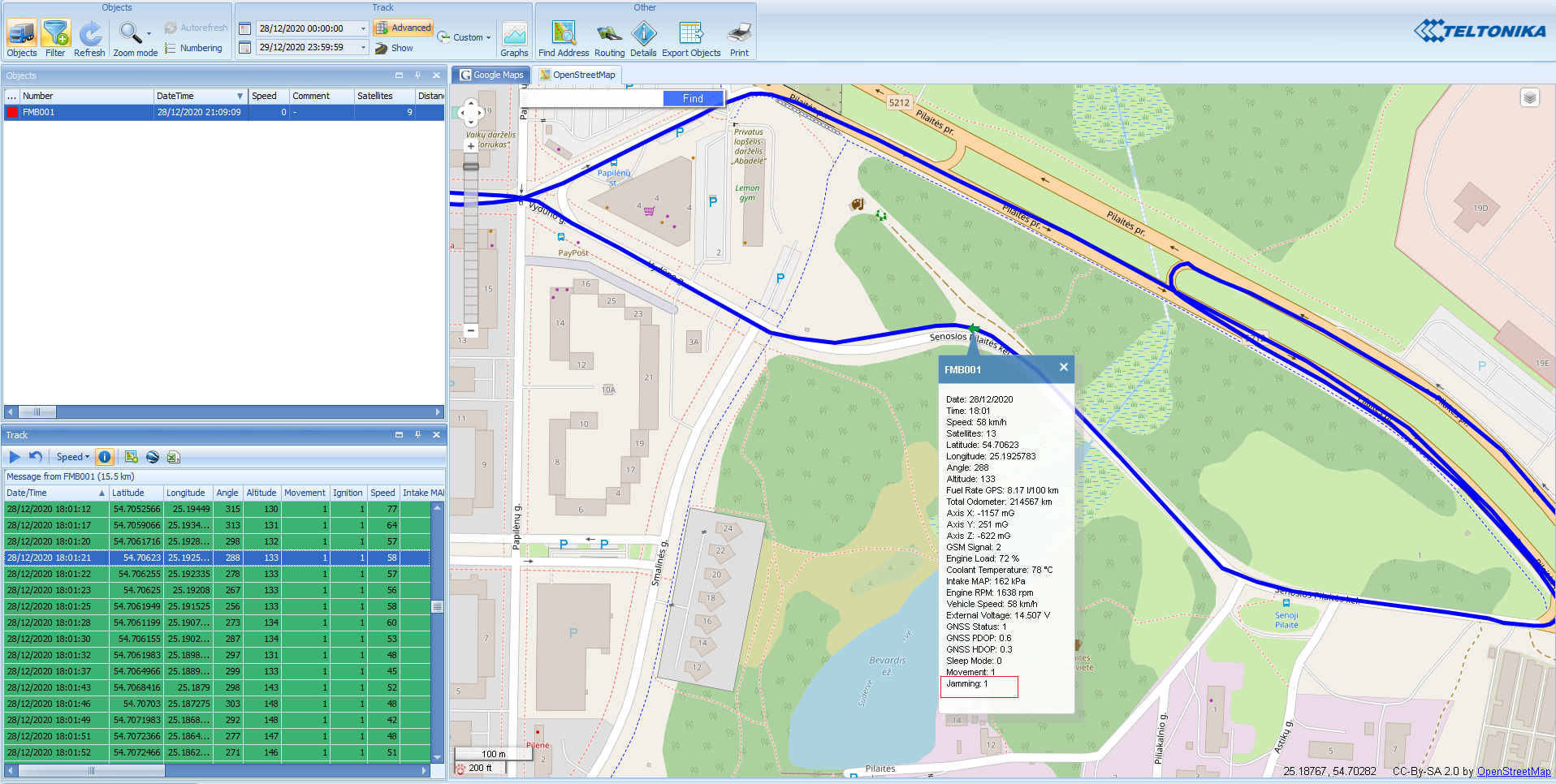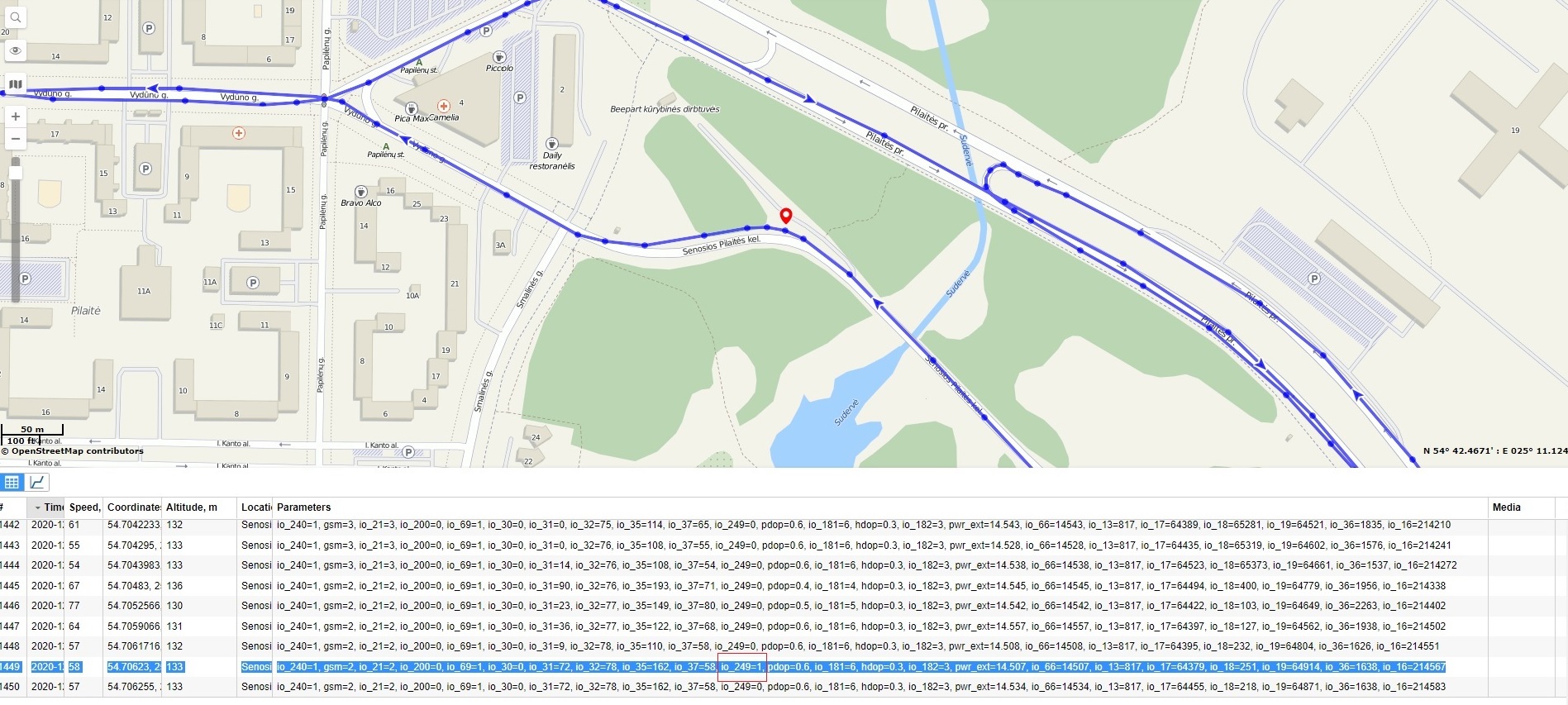Difference between revisions of "Universal Device Test Guide"
| (25 intermediate revisions by 5 users not shown) | |||
| Line 3: | Line 3: | ||
[[File:Welcome to the telematics banner 1.1.png]] | [[File:Welcome to the telematics banner 1.1.png]] | ||
| − | Universal Device Testing Guide can be applied to any Teltonika Telematics device. | + | Universal Device Testing Guide can be applied to any Teltonika Telematics device. Purpose of this guide is to help new users get acquainted with Teltonika Fleet Management devices and test basic functions in 5 easy steps. |
Once you are finished with basic testing, you will find additional instructions on how to test specific use cases and advanced features of our devices as well as remote tracker management platform and other solutions. | Once you are finished with basic testing, you will find additional instructions on how to test specific use cases and advanced features of our devices as well as remote tracker management platform and other solutions. | ||
| − | In case you have any questions regarding Teltonika devices or their features, do not worry - we have a well of knowledge called '''[[Main Page|Teltonika WIKI]]''', '''[https://community.teltonika. | + | In case you have any questions regarding Teltonika devices or their features, do not worry - we have a well of knowledge called '''[[Main Page|Teltonika WIKI]]''', '''[https://community.teltonika-gps.com/ Crowd Support Forum]''' and our '''[https://www.youtube.com/channel/UCjWIn5amqvtWc7X7tI_04LQ Official Youtube Channel]''', where you can find answers regarding our devices functionalities and specifications. |
| − | If you do not find answers to your questions online - do not despair, we have a highly professional team of support engineers who are willing to help and can be reached via Helpdesk. | + | If you do not find answers to your questions online - do not despair, we have a highly professional team of support engineers who are willing to help and can be reached via VIP Helpdesk. |
=='''<big>Basic Testing</big>'''== | =='''<big>Basic Testing</big>'''== | ||
[[File:5 easy steps to prepare any Teltonika Telematics device banner.png]] | [[File:5 easy steps to prepare any Teltonika Telematics device banner.png]] | ||
| − | In this chapter | + | In this chapter we will go through 5 easy testing steps which will help you get acquainted with Teltonika Telematics devices. We will cover everything you need to start using the device - from inserting SIM card, powering the device and ending with GPS track information directly from your vehicle to the server. |
| − | + | ==='''Prepare the Device'''=== | |
| − | + | All our devices use SIM card for telecommunication, thus you will not be able to get any data and/or communicate with the device remotely without the SIM card. In this chapter you will find a guide on how to insert SIM card and connect internal battery. | |
| − | |||
| − | |||
| − | ===''' | ||
| − | |||
| − | |||
| − | All our devices use SIM | ||
''Note:'' Different Teltonika devices use different SIM card types: mini-SIM, micro-SIM, nano-SIM, and [[Requirements for eSIM|'''eSIM''']] (which is soldered during device manufacturing process). | ''Note:'' Different Teltonika devices use different SIM card types: mini-SIM, micro-SIM, nano-SIM, and [[Requirements for eSIM|'''eSIM''']] (which is soldered during device manufacturing process). | ||
| − | + | ===='''How to insert SIM card and connect the battery*'''==== | |
| − | + | # Gently remove '''device cover''' using '''plastic pry tool''' from both sides as it is showed in a 1st picture. | |
| − | '''How to insert SIM card and connect the battery | + | # After opening device cover, you will see '''SIM card''' and '''battery''' connection '''slots'''. |
| − | #Gently remove '''device cover''' using '''plastic pry tool''' from both sides as it is showed in a 1st picture. | + | # Insert '''SIM''' card as shown with '''PIN request disabled''' or read '''[[FMB120 Security info|Security info]]''' (Universal Guide) how to enter it later in Configurator. Make sure that SIM card '''cut-off corner''' is pointing forward to slot. |
| − | #After opening device cover, you will see '''SIM card''' and '''battery''' connection '''slots'''. | + | # Connect the battery as shown on device. Position the battery in place where it does not obstruct other components. |
| − | #Insert '''SIM''' card as shown with '''PIN request disabled''' or read '''[[FMB120 Security info|Security info]]''' (Universal Guide) how to enter it later in Configurator. Make sure that SIM card '''cut-off corner''' is pointing forward to slot. | + | # Attach device '''cover''' back. Device is ready to be connected. |
| − | #Connect the battery as shown on device. Position the battery in place where it does not obstruct other components. | + | {| class="wikitable" |
| − | #Attach device '''cover''' back. Device is ready to be connected. | + | |+ |
| − | + | |[[File:FM nuasmenintas 1.1.png]] | |
| − | + | |[[File:FM nuasmenintas 2.2.png]] | |
| − | + | |[[File:FM nuasmenintas 3.3.png]] | |
| − | + | |[[File:FM nuasmenintas 4.4.png]] | |
| − | |||
| − | |||
| − | |||
| − | |||
| − | {| class="wikitable | ||
| − | |||
| − | | | ||
| − | |[[ | ||
| − | |||
| − | |||
| − | |||
| − | |||
| − | |||
| − | |||
| − | |||
| − | |||
| − | |||
| − | |||
| − | |||
| − | |||
| − | |||
| − | |||
| − | |||
| − | |||
| − | |||
| − | |||
| − | |||
| − | |||
| − | |||
| − | |||
| − | |||
| − | |||
| − | |||
| − | |||
| − | |||
| − | |||
| − | |||
| − | |||
| − | |||
| − | |||
| − | |||
| − | |||
|} | |} | ||
| − | |||
| − | |||
| − | |||
| − | |||
| − | |||
| − | |||
| − | |||
| − | |||
| − | |||
| − | |||
| − | |||
| − | |||
| − | |||
| − | |||
| − | |||
| − | |||
| − | |||
| − | |||
| − | |||
| − | |||
| − | |||
| − | |||
| − | |||
| − | |||
| − | |||
| − | |||
| − | |||
| − | |||
| − | |||
| − | |||
| − | |||
| − | |||
| − | |||
| − | |||
| − | |||
| − | |||
| − | |||
| − | |||
| − | |||
| − | |||
| − | |||
| − | |||
| − | |||
| − | |||
| − | |||
| − | |||
| − | |||
| − | |||
| − | |||
| − | |||
| − | |||
| − | |||
| − | |||
| − | |||
| − | |||
| − | |||
| − | |||
| − | |||
| − | |||
| − | |||
| − | |||
| − | |||
| − | |||
| − | |||
| − | |||
| − | |||
| − | |||
| − | |||
| − | |||
| − | |||
| − | |||
| − | |||
| − | |||
| − | |||
| − | |||
| − | |||
| − | |||
| − | |||
| − | |||
| − | |||
| − | |||
| − | |||
| − | |||
| − | |||
| − | |||
| − | |||
| − | |||
| − | |||
| − | |||
| − | |||
| − | |||
| − | |||
| − | |||
| − | |||
| − | |||
| − | |||
| − | |||
| − | |||
| − | |||
| − | |||
| − | |||
| − | |||
| − | |||
| − | |||
| − | |||
| − | |||
| − | |||
| − | |||
| − | |||
| − | |||
| − | |||
| − | |||
| − | |||
| − | |||
| − | |||
| − | |||
| − | |||
| − | |||
| − | |||
| − | |||
| − | |||
| − | |||
| − | |||
| − | |||
| − | |||
| − | |||
| − | |||
| − | |||
| − | |||
| − | |||
| − | |||
| − | |||
| − | |||
| − | |||
| − | |||
| − | |||
| − | |||
| − | |||
| − | |||
| − | |||
| − | |||
| − | |||
| − | |||
| − | |||
| − | |||
| − | |||
| − | |||
| − | |||
| − | |||
| − | |||
| − | |||
| − | |||
| − | |||
| − | |||
| − | |||
| − | |||
| − | |||
| − | |||
| − | |||
| − | |||
| − | |||
| − | |||
| − | |||
| − | |||
| − | |||
| − | |||
| − | |||
| − | |||
| − | |||
| − | |||
| − | |||
| − | |||
| − | |||
| − | |||
| − | |||
| − | |||
| − | |||
| − | |||
| − | |||
| − | |||
| − | |||
| − | |||
| − | |||
| − | |||
| − | |||
| − | |||
| − | |||
| − | |||
| − | |||
| − | |||
| − | |||
| − | |||
| − | |||
| − | |||
| − | |||
| − | |||
| − | |||
| − | |||
| − | |||
| − | |||
| − | |||
| − | |||
| − | |||
| − | |||
| − | |||
| − | |||
| − | |||
| − | |||
| − | |||
| − | |||
| − | |||
| − | |||
| − | |||
| − | |||
| − | |||
| − | |||
| − | |||
| − | |||
| − | |||
| − | |||
| − | |||
| − | |||
| − | |||
| − | |||
| − | |||
| − | |||
| − | |||
| − | |||
| − | |||
| − | |||
| − | |||
| − | |||
| − | |||
| − | |||
| − | |||
| − | |||
| − | |||
| − | |||
| − | |||
| − | |||
| − | |||
| − | |||
| − | |||
| − | |||
| − | |||
| − | |||
| − | |||
| − | |||
| − | |||
| − | |||
| − | |||
| − | |||
| − | |||
| − | |||
| − | |||
| − | |||
| − | |||
| − | |||
| − | |||
| − | |||
| − | |||
| − | |||
| − | |||
| − | |||
| − | |||
| − | |||
| − | |||
| − | |||
| − | |||
| − | |||
| − | |||
| − | |||
| − | |||
| − | |||
| − | |||
| − | |||
| − | |||
| − | |||
| − | |||
| − | |||
| + | '''<nowiki>*</nowiki> If you would like to check how to insert SIM card into your particular device, please check [[Main Page|Teltonika WIKI documentation.]] Click on ''your device'' -> First Start -> How to insert SIM Card.''' | ||
{| | {| | ||
| Line 370: | Line 43: | ||
| − | ===''' | + | ==='''Connect the device to PC'''=== |
| − | |||
| − | One way to control your device is by connecting it to | + | One way to control your device is by connecting it to PC. During this step, we will introduce you on how to establish the connection. |
| − | + | ===='''How to install USB drivers (Windows)'''==== | |
| − | '''How to install USB drivers (Windows) | + | Download COM port drivers from Teltonika '''[https://teltonika-gps.com/downloads/en/fmb120/TeltonikaCOMDriver.zip here]''' and install them. |
| − | |||
| − | Download COM port drivers from Teltonika '''[ | ||
| − | |||
| − | |||
| + | ===='''PC Connection (Windows)'''==== | ||
Power-up device with '''DC voltage (10 – 30 V)*''' power supply using '''supplied power cable**'''. LED’s should start blinking, see “'''[[LED Status|LED behaviour description]]'''”. | Power-up device with '''DC voltage (10 – 30 V)*''' power supply using '''supplied power cable**'''. LED’s should start blinking, see “'''[[LED Status|LED behaviour description]]'''”. | ||
<span> </span> | <span> </span> | ||
| − | Connect device to computer*** using '''USB cable''' or ''' | + | Connect device to computer*** using '''USB cable''' or '''Bluetooth''' connection. |
''* FMB900, FMB910, FMB920, MTB100, FMB202, FMB204 devices support '''(6 - 30 V)''' DC power supply.'' | ''* FMB900, FMB910, FMB920, MTB100, FMB202, FMB204 devices support '''(6 - 30 V)''' DC power supply.'' | ||
| − | <nowiki>**</nowiki> FMP100, FMB002, FMB020, FMB003 can be powered up and configured via USB without any need | + | <nowiki>**</nowiki> FMP100, FMB002, FMB020, FMB003 can be powered up and configured via USB without any need of external power supply. |
<nowiki>***</nowiki> If you would like to check how to connect your particular device to PC, please see device [[Main Page|'''Teltonika WIKI documentation.''']] Click on ''your device'' -> First Start -> PC Connection (Windows) | <nowiki>***</nowiki> If you would like to check how to connect your particular device to PC, please see device [[Main Page|'''Teltonika WIKI documentation.''']] Click on ''your device'' -> First Start -> PC Connection (Windows) | ||
| − | ===''' | + | ==='''Configure the Device'''=== |
| − | |||
| − | |||
After powering up your device, it should be configured to meet your needs. Here you will find steps on how to prepare your device for a first start. | After powering up your device, it should be configured to meet your needs. Here you will find steps on how to prepare your device for a first start. | ||
| + | ===='''Configuration'''==== | ||
| − | + | At first device will have default factory settings set. These settings should be changed according to the user's needs.<br /> | |
| − | |||
| − | At first | ||
Main configuration can be performed via '''[[Teltonika Configurator]]''' software. Get the latest '''Configurator''' version from '''[[{{{SAS_Configurator_Versions|Teltonika Configurator versions}}}|here.]]''' Configurator operates on Microsoft Windows OS and uses prerequisite latest MS .NET Framework. | Main configuration can be performed via '''[[Teltonika Configurator]]''' software. Get the latest '''Configurator''' version from '''[[{{{SAS_Configurator_Versions|Teltonika Configurator versions}}}|here.]]''' Configurator operates on Microsoft Windows OS and uses prerequisite latest MS .NET Framework. | ||
| − | + | Configuration process begins by pressing on connected device: | |
[[File:Faceless_configurator_select.png|370x370px]] | [[File:Faceless_configurator_select.png|370x370px]] | ||
| Line 410: | Line 76: | ||
After connection to Configurator '''Status window''' will be displayed. | After connection to Configurator '''Status window''' will be displayed. | ||
| − | In the status window, you will be able to see crucial information that | + | In the status window, you will be able to see crucial information that influence device operation such as GNSS and GSM statuses. |
| − | GNSS Info tab contains GNSS Status, Satellites | + | GNSS Info tab contains GNSS Status, Satellites and Location information. |
| − | *GNSS Status describes whether the module is ON, received/sent GNSS packets count, FIX status and FIX time | + | * GNSS Status describes whether the module is ON, received/sent GNSS packets count, FIX status and FIX time |
| − | *Satellites provide you information about visible and currently in-use satellites | + | * Satellites provide you information about visible and currently in-use satellites |
| − | *Location provides you the coordinates, speed, altitude | + | * Location provides you the coordinates, speed, altitude and angle of your current location. |
| − | GSM Info tab contains GSM Status, Records, GPRS Traffic, SMS Count | + | GSM Info tab contains GSM Status, Records, GPRS Traffic, SMS Count and Sockets information |
| − | *GSM Status describes modem status, SIM state, GPRS status, signal level | + | * GSM Status describes modem status, SIM state, GPRS status, signal level and operator code |
| − | *Records provide you information about sent records count and the date of | + | * Records provide you information about sent records count and the date of last record sent/server response |
| − | *GPRS Traffic contains information about data usage | + | * GPRS Traffic contains information about data usage |
| − | *SMS Count shows you sent/received SMS count | + | * SMS Count shows you sent/received SMS count |
| − | *Sockets provide status about AVL Data server communication | + | * Sockets provide status about AVL Data server communication |
{| class="wikitable" | {| class="wikitable" | ||
| Line 433: | Line 99: | ||
|- | |- | ||
! rowspan="2" |[[File:GNSS Info.png|frameless|800x800px]] | ! rowspan="2" |[[File:GNSS Info.png|frameless|800x800px]] | ||
| − | |Module status - here you will be able to see whether | + | |Module status - here you will be able to see whether module is ON or in a Sleep mode. |
|- | |- | ||
| − | |Fix Status - Fix/No Fix. For a GNSS fix, at least 4 visible satellites are needed, thus for best performance, the device should be facing | + | |Fix Status - Fix/No Fix. For a GNSS fix, at least 4 visible satellites are needed, thus for best performance, the device should be facing open sky. |
|- | |- | ||
| rowspan="3" |[[File:GSM Info.png|frameless|801x801px]] | | rowspan="3" |[[File:GSM Info.png|frameless|801x801px]] | ||
| Line 445: | Line 111: | ||
|} | |} | ||
Various '''Status window''' tabs display information about '''GNSS, GSM, I/O, Maintenance''' and etc. configuration can be loaded and saved to the device. '''After changing the configuration, make sure that modifications are saved by clicking "Save to device" button.''' To restore default configuration, click '''"Reset configuration"''' button. | Various '''Status window''' tabs display information about '''GNSS, GSM, I/O, Maintenance''' and etc. configuration can be loaded and saved to the device. '''After changing the configuration, make sure that modifications are saved by clicking "Save to device" button.''' To restore default configuration, click '''"Reset configuration"''' button. | ||
| − | |||
{| class="wikitable" | {| class="wikitable" | ||
|+ | |+ | ||
|[[File:Testing_always_sending.png|alt=|frameless]] | |[[File:Testing_always_sending.png|alt=|frameless]] | ||
|'''Note:''' make sure that "Records Saving/Sending Without TS" in System Tab is configured as "Always" ''for testing purposes.'' | |'''Note:''' make sure that "Records Saving/Sending Without TS" in System Tab is configured as "Always" ''for testing purposes.'' | ||
| − | This will allow | + | This will allow device to send the data even if there is no GNSS fix (which is hardly obtained inside the buildings) and/or time synchronization. |
|} | |} | ||
| − | + | Most important configurator section is GPRS – where all your server and '''GPRS settings''' can be configured and '''Data Acquisition''' – where data acquiring parameters can be configured. | |
| − | |||
| − | |||
{| class="wikitable" | {| class="wikitable" | ||
| − | |+ | + | |+GPRS Settings |
| − | GPRS Settings | ||
!Illustration | !Illustration | ||
!Parameter ID | !Parameter ID | ||
| Line 463: | Line 125: | ||
|- | |- | ||
! rowspan="3" |[[File:GPRS_settings.png|alt=|frameless|400x400px]] | ! rowspan="3" |[[File:GPRS_settings.png|alt=|frameless|400x400px]] | ||
| − | |<span style="background-color:#91b9d4;">2001</span> | + | |<span style="background-color:#91b9d4;">2001</span> |
|'''A'''ccess '''P'''oint '''N'''ame is a gateway between mobile operator and public internet. | |'''A'''ccess '''P'''oint '''N'''ame is a gateway between mobile operator and public internet. | ||
It can be obtained from your SIM card provider. | It can be obtained from your SIM card provider. | ||
| Line 481: | Line 143: | ||
|Domain/IP of destination server | |Domain/IP of destination server | ||
|- | |- | ||
| − | |<span style="background-color:#d491b9;">2005</span> | + | |<span style="background-color:#d491b9;">2005</span> |
|Port of destination server | |Port of destination server | ||
|- | |- | ||
| − | |<span style="background-color:#d4b991;">2006</span> | + | |<span style="background-color:#d4b991;">2006</span> |
|Data sending to destination server protocol (0 – TCP, 1 – UDP) | |Data sending to destination server protocol (0 – TCP, 1 – UDP) | ||
|} | |} | ||
| − | [[File:SMS_testing.png|alt=|347x347px|thumb|Picture 4: SMS communication between user and device]] | + | [[File:SMS_testing.png|alt=|347x347px|thumb|Picture 4: SMS communication between user and device]]'''Note:''' If you do not have GPS tracking service yet, you can use Teltonika TCP/UDP listener to receive data from the device and Teltonika parser to parse received information. Software can be downloaded from [[Special:Redirect/file/Protocols_and_AVL_parser_pack.zip|'''here.''']] Archive password: 1234 |
| − | |||
| − | '''Note:''' If you do not have GPS tracking service yet, you can use Teltonika TCP/UDP listener to receive data from the device and Teltonika parser to parse received information. Software can be downloaded from [[Special:Redirect/file/Protocols_and_AVL_parser_pack.zip|'''here.''']] Archive password: 1234 | ||
<br /> | <br /> | ||
| Line 496: | Line 156: | ||
'''Note''': Before SMS text, two space symbols should be inserted. | '''Note''': Before SMS text, two space symbols should be inserted. | ||
| − | After successful GPRS/SERVER settings configuration, device will '''synchronize time''' and '''update records''' to '''the configured server''' according to the Data Acquisition time intervals. | + | After successful GPRS/SERVER settings configuration, device will '''synchronize time''' and '''update records''' to '''the configured server''' according to the Data Acquisition time intervals. Default configuration has optimal parameters present to ensure best performance of track quality and data usage. However, '''''for testing''''', we do recommend these Data Acquisition settings: |
{| class="wikitable" | {| class="wikitable" | ||
|+ | |+ | ||
| Line 509: | Line 169: | ||
|- | |- | ||
|'''10004''' | |'''10004''' | ||
| − | |'''Min Saved Records''' defines | + | |'''Min Saved Records''' defines minimum number of records in one data packet that can be sent to server. |
|- | |- | ||
|'''10005''' | |'''10005''' | ||
| − | |'''Send Period''' indicates time interval in seconds after which | + | |'''Send Period''' indicates time interval in seconds after which device checks whether it has generated enough records based on '''Min Saved Records''' parameter. If enough records are generated, device will send them to server. If interval is set to 0 seconds, device will not send any records to server. |
| − | ''Note:'' If | + | ''Note:'' If link with server is already open, records are sent to server immediately after they are generated. |
|} | |} | ||
| − | + | Device will generate periodic records and send them to server based on Data Acquisition settings. | |
Using these settings, the device will make a periodic record every 30 seconds and will send it every 30 seconds | Using these settings, the device will make a periodic record every 30 seconds and will send it every 30 seconds | ||
| Line 528: | Line 188: | ||
More details about devices configuration using Configurator and more information about your particular device can be found [[Main Page|'''Teltonika WIKI documentation.''']] Click on ''your device'' -> Configuration. | More details about devices configuration using Configurator and more information about your particular device can be found [[Main Page|'''Teltonika WIKI documentation.''']] Click on ''your device'' -> Configuration. | ||
| − | ===''' | + | ==='''Mount the Device'''=== |
| − | |||
| − | |||
Different types of devices have specific mounting instructions: some of them are simple plug-and-play, while other hard-wired devices require professional installation. Please find your specific device mounting instructions [[Main Page|'''Teltonika WIKI documentation.''']] Click on ''your device'' -> First Start -> Mounting recommendations and precautions. | Different types of devices have specific mounting instructions: some of them are simple plug-and-play, while other hard-wired devices require professional installation. Please find your specific device mounting instructions [[Main Page|'''Teltonika WIKI documentation.''']] Click on ''your device'' -> First Start -> Mounting recommendations and precautions. | ||
| + | ===='''Installation instructions'''==== | ||
| + | [[File:OBD tracker mounting places.3.png]] | ||
| − | + | ==='''Tracking the Device'''=== | |
| − | |||
| − | |||
| − | |||
| − | ===''' | ||
| − | |||
Last but not least step for Basic Testing would be to get data/track from your device. | Last but not least step for Basic Testing would be to get data/track from your device. | ||
| Line 545: | Line 200: | ||
This can be done by using either simple TCP/UDP listeners or pre-made tracking platform like listed [[Fleet Management platforms|'''here.''']] | This can be done by using either simple TCP/UDP listeners or pre-made tracking platform like listed [[Fleet Management platforms|'''here.''']] | ||
| − | Below you can find steps on how to | + | Below you can find steps on how to setup simple TCP/UDP listener on your personal computer. |
| − | #Open [[Opening TCP/UDP port|'''TCP/UDP port''']] | + | # Open [[Opening TCP/UDP port|'''TCP/UDP port''']] |
| − | #Go to [[Java Parser First Start Guide|'''Java Parser First Start Guide''']] | + | # Go to [[Java Parser First Start Guide|'''Java Parser First Start Guide''']] |
Below you can find pictures of how the track looks on different pre-made tracking platforms: | Below you can find pictures of how the track looks on different pre-made tracking platforms: | ||
| Line 560: | Line 215: | ||
[[File:Discover more device possibilities in-depth banner.png]] | [[File:Discover more device possibilities in-depth banner.png]] | ||
| − | In this chapter | + | In this chapter we will review advanced device functionalities to get the most out of your Teltonika Telematics device. We will go through some of the specific, widespread use cases, however, keep in mind that device scenarios are not limited to just that. Available device functions can accomplish much wider range of application scenarios, which will be limited only by your imagination! |
==='''Advanced SMS capabilities'''=== | ==='''Advanced SMS capabilities'''=== | ||
| − | Teltonika devices have | + | Teltonika devices have broad SMS usage spectrum including advanced device configuration and debugging. A full list of SMS commands can be found [[FMB SMS/GPRS Commands|'''here.''']] |
For example, one of the most widely used SMS command for configuring the device is "setparam". Below you can see a description of this command: | For example, one of the most widely used SMS command for configuring the device is "setparam". Below you can see a description of this command: | ||
| Line 572: | Line 227: | ||
|+ | |+ | ||
|[[File:WIKI_hover.gif]] | |[[File:WIKI_hover.gif]] | ||
| − | |You can also find parameter ID by hovering | + | |You can also find parameter ID by hovering mouse pointer over specific parameter in configurator. |
|} | |} | ||
SMS command is limited to 160 characters. | SMS command is limited to 160 characters. | ||
| Line 604: | Line 259: | ||
[[File:Extend device's capabilities with our solutions banner.png]] | [[File:Extend device's capabilities with our solutions banner.png]] | ||
| − | In this section | + | In this section we will get acquainted with our most useful and simple to utilize solutions which will provide remote access, management and control of your device as well as external devices like tachograph. |
==='''FOTA WEB'''=== | ==='''FOTA WEB'''=== | ||
| − | FOTA WEB – a brand new and exciting solution for remote access to your Teltonika Fleet management devices! FOTA WEB enables firmware upgrades, configuration changes, remote device debugging of FMx devices, as well as CAN adapter updates without a need of a dedicated application – everything is achieved through your regular Web browser, from any device. By default | + | FOTA WEB – a brand new and exciting solution for remote access to your Teltonika Fleet management devices! FOTA WEB enables firmware upgrades, configuration changes, remote device debugging of FMx devices, as well as CAN adapter updates without a need of a dedicated application – everything is achieved through your regular Web browser, from any device. By default device connects to FOTA WEB every 720 minutes (parameter is configurable). For more information click '''[[FOTA WEB|here.]]''' If you would like to have your own FOTA WEB account, please contact your Sales Manager. [https://www.youtube.com/watch?v=SiMwnkEEes4 '''Short video about FOTA WEB.'''] |
| − | Moreover, we also have a desktop FOTA solution: desktop ''FOTA is | + | Moreover, we also have a desktop FOTA solution: desktop ''FOTA is predecessor of FOTA WEB, which is mainly used for updating EOL (End-Of-Life, - FM5300, FMA120 etc.) devices. We strongly advise to use our newest [[FOTA WEB|'''FOTA WEB''']] platform for OTA changes.'' |
'''''Note:''''' FOTA WEB meets all '''GDPR''' requirements thus '''we do not store, track or analyze your personal data.''' | '''''Note:''''' FOTA WEB meets all '''GDPR''' requirements thus '''we do not store, track or analyze your personal data.''' | ||
| Line 616: | Line 271: | ||
==='''WEB Tacho'''=== | ==='''WEB Tacho'''=== | ||
| − | Teltonika WEB Tacho is an online service that allows to remotely download Tachograph files from supported tachographs, using Teltonika professional trackers. Files are stored on server, in defined format (.DDD, .V1B, .C1B, .TGD). Files can be downloaded – directly from the website, receive in Email, receive to | + | Teltonika WEB Tacho is an online service that allows to remotely download Tachograph files from supported tachographs, using Teltonika professional trackers. Files are stored on server, in defined format (.DDD, .V1B, .C1B, .TGD). Files can be downloaded – directly from the website, receive in Email, receive to defined FTP server. For more information click '''[[WEB Tacho|here.]]''' If you would like to have your own WEB Tacho account, please contact your Sales Manager. |
=='''<big>Protocols</big>'''== | =='''<big>Protocols</big>'''== | ||
| Line 626: | Line 281: | ||
==='''Data sending protocols'''=== | ==='''Data sending protocols'''=== | ||
| − | Each Codec used by Teltonika devices has | + | Each Codec used by Teltonika devices has different purpose. For example, [[Codec#Codec 8 Extended|'''Codec 8 Extended''']] is main FM device protocol used to send data to server, while [[Codec#Codec for communication over GPRS messages|'''Codec 12''']] is used for device-server communication using GPRS messages. All information about Teltonika's communication protocols used by FM devices can be found [[Codec|'''here.''']] |
==='''Protocols implementation'''=== | ==='''Protocols implementation'''=== | ||
| Line 634: | Line 289: | ||
Each device I/O parameter has its own unique ID, which is called AVL ID. Once the TCP/UDP listener and AVL Records parser are implemented, received AVL IDs descriptions can be checked in the AVL ID list page for your specific device (for example: [[FMB120_Teltonika_Data_Sending_Parameters_ID|'''FMB120''']] ). | Each device I/O parameter has its own unique ID, which is called AVL ID. Once the TCP/UDP listener and AVL Records parser are implemented, received AVL IDs descriptions can be checked in the AVL ID list page for your specific device (for example: [[FMB120_Teltonika_Data_Sending_Parameters_ID|'''FMB120''']] ). | ||
| − | |||
| − | |||
Revision as of 13:34, 18 June 2021
Main Page > General Information > Universal Device Test GuideIntroduction
Universal Device Testing Guide can be applied to any Teltonika Telematics device. Purpose of this guide is to help new users get acquainted with Teltonika Fleet Management devices and test basic functions in 5 easy steps.
Once you are finished with basic testing, you will find additional instructions on how to test specific use cases and advanced features of our devices as well as remote tracker management platform and other solutions.
In case you have any questions regarding Teltonika devices or their features, do not worry - we have a well of knowledge called Teltonika WIKI, Crowd Support Forum and our Official Youtube Channel, where you can find answers regarding our devices functionalities and specifications.
If you do not find answers to your questions online - do not despair, we have a highly professional team of support engineers who are willing to help and can be reached via VIP Helpdesk.
Basic Testing
In this chapter we will go through 5 easy testing steps which will help you get acquainted with Teltonika Telematics devices. We will cover everything you need to start using the device - from inserting SIM card, powering the device and ending with GPS track information directly from your vehicle to the server.
Prepare the Device
All our devices use SIM card for telecommunication, thus you will not be able to get any data and/or communicate with the device remotely without the SIM card. In this chapter you will find a guide on how to insert SIM card and connect internal battery.
Note: Different Teltonika devices use different SIM card types: mini-SIM, micro-SIM, nano-SIM, and eSIM (which is soldered during device manufacturing process).
How to insert SIM card and connect the battery*
- Gently remove device cover using plastic pry tool from both sides as it is showed in a 1st picture.
- After opening device cover, you will see SIM card and battery connection slots.
- Insert SIM card as shown with PIN request disabled or read Security info (Universal Guide) how to enter it later in Configurator. Make sure that SIM card cut-off corner is pointing forward to slot.
- Connect the battery as shown on device. Position the battery in place where it does not obstruct other components.
- Attach device cover back. Device is ready to be connected.
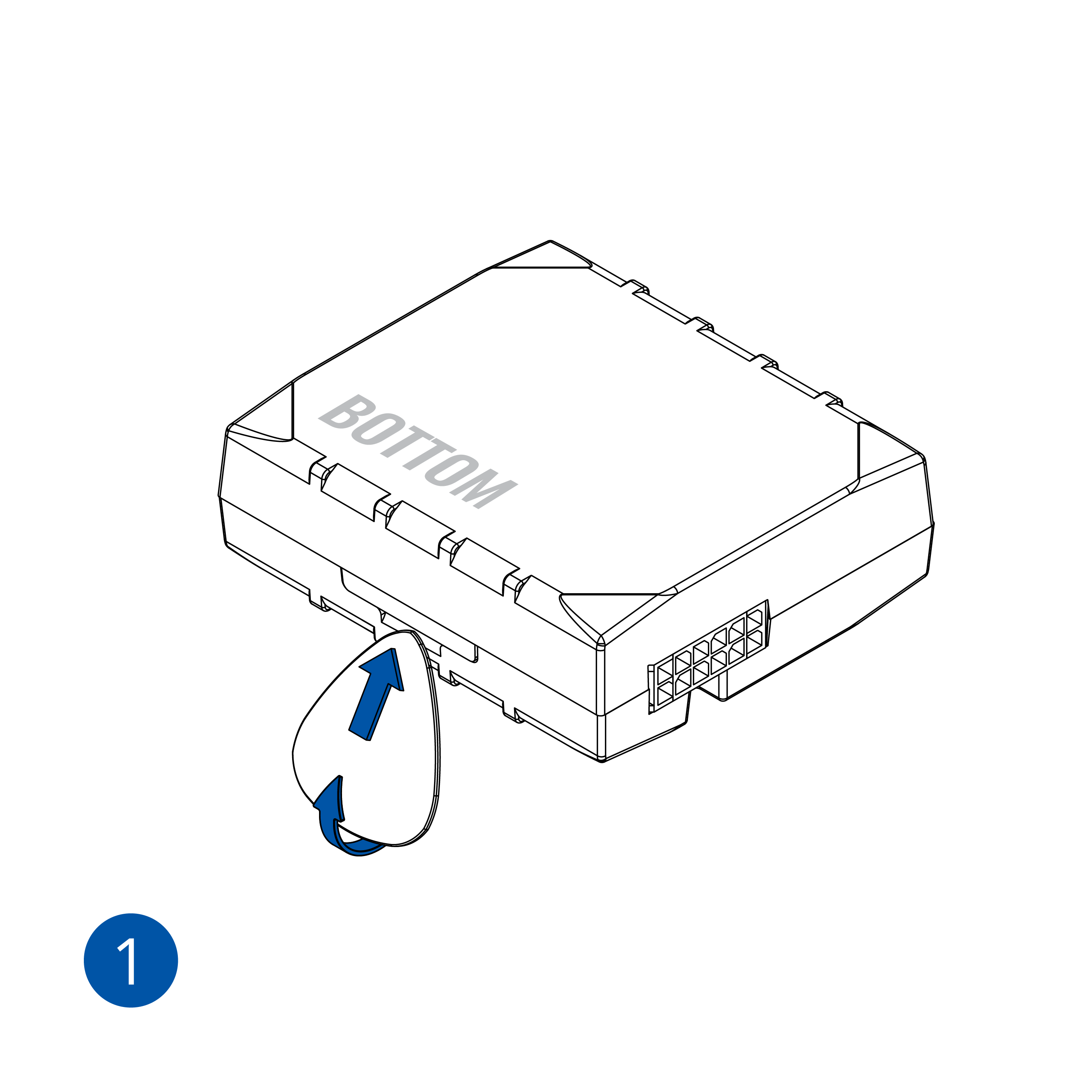
|
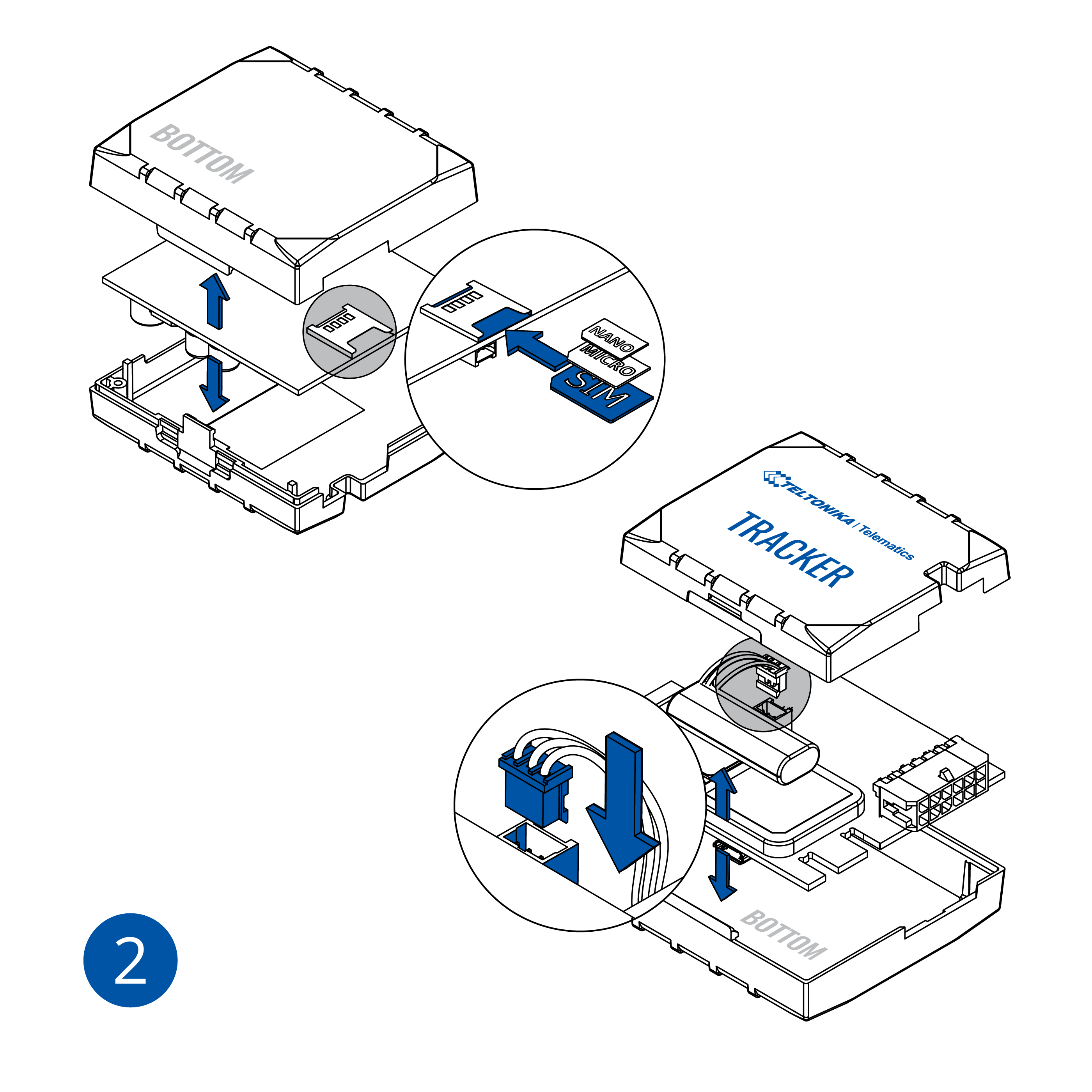
|
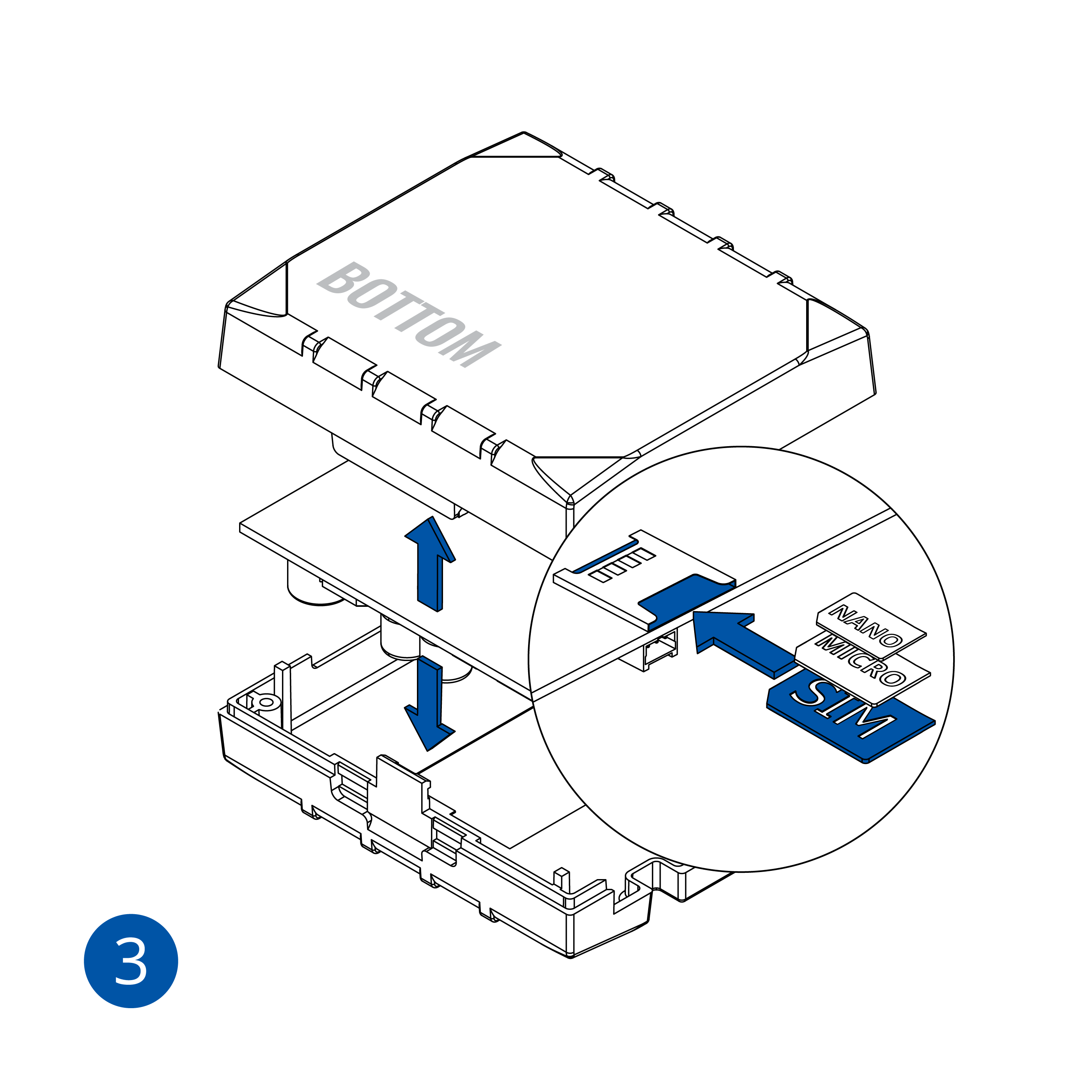
|
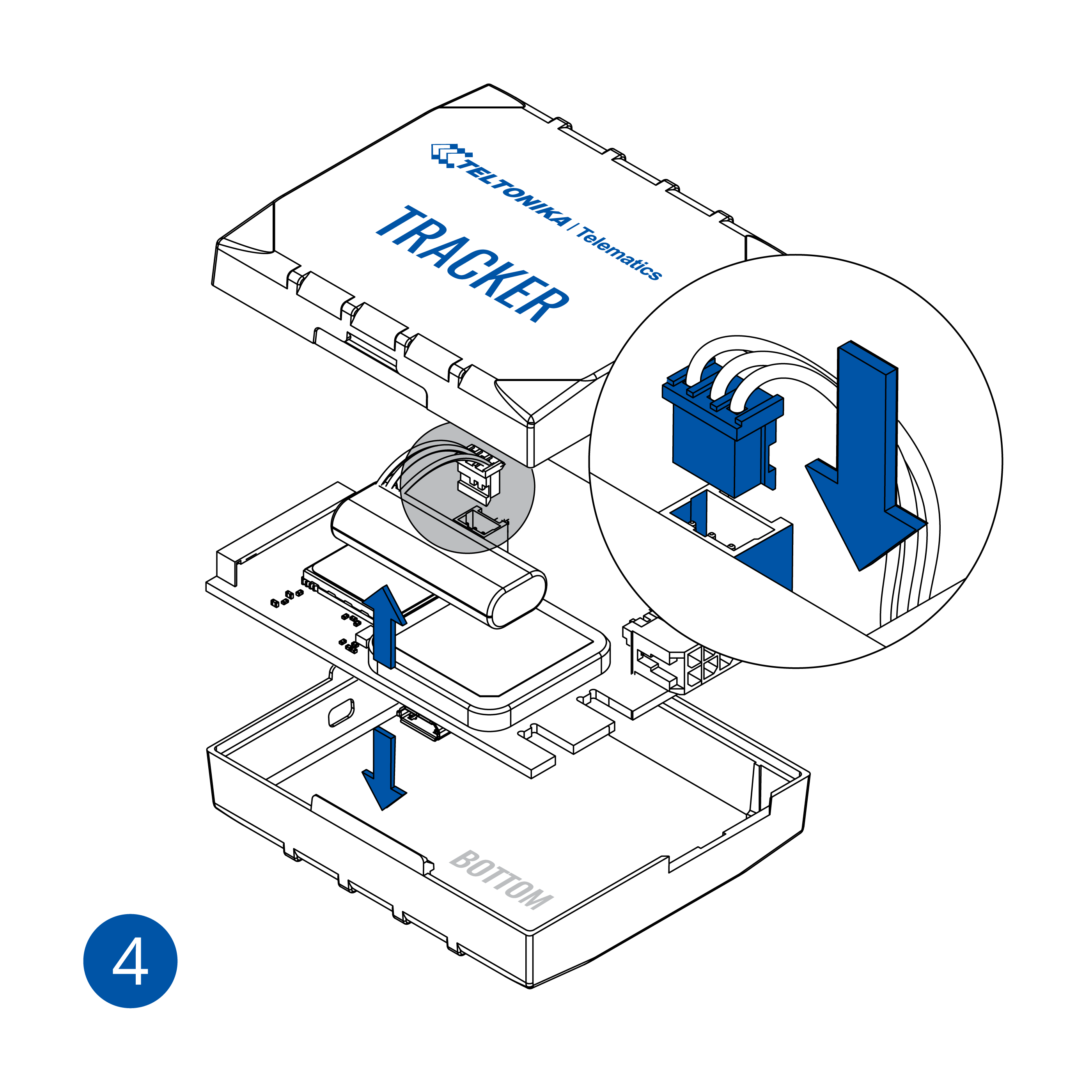
|
* If you would like to check how to insert SIM card into your particular device, please check Teltonika WIKI documentation. Click on your device -> First Start -> How to insert SIM Card.
 |
SIM card insertion/removal must be performed when device is powered off – external voltage and internal battery disconnected. Otherwise SIM card might be damaged or device will not detect it. |
Connect the device to PC
One way to control your device is by connecting it to PC. During this step, we will introduce you on how to establish the connection.
How to install USB drivers (Windows)
Download COM port drivers from Teltonika here and install them.
PC Connection (Windows)
Power-up device with DC voltage (10 – 30 V)* power supply using supplied power cable**. LED’s should start blinking, see “LED behaviour description”.
Connect device to computer*** using USB cable or Bluetooth connection.
* FMB900, FMB910, FMB920, MTB100, FMB202, FMB204 devices support (6 - 30 V) DC power supply.
** FMP100, FMB002, FMB020, FMB003 can be powered up and configured via USB without any need of external power supply.
*** If you would like to check how to connect your particular device to PC, please see device Teltonika WIKI documentation. Click on your device -> First Start -> PC Connection (Windows)
Configure the Device
After powering up your device, it should be configured to meet your needs. Here you will find steps on how to prepare your device for a first start.
Configuration
At first device will have default factory settings set. These settings should be changed according to the user's needs.
Main configuration can be performed via Teltonika Configurator software. Get the latest Configurator version from here. Configurator operates on Microsoft Windows OS and uses prerequisite latest MS .NET Framework.
Configuration process begins by pressing on connected device:
After connection to Configurator Status window will be displayed.
In the status window, you will be able to see crucial information that influence device operation such as GNSS and GSM statuses.
GNSS Info tab contains GNSS Status, Satellites and Location information.
- GNSS Status describes whether the module is ON, received/sent GNSS packets count, FIX status and FIX time
- Satellites provide you information about visible and currently in-use satellites
- Location provides you the coordinates, speed, altitude and angle of your current location.
GSM Info tab contains GSM Status, Records, GPRS Traffic, SMS Count and Sockets information
- GSM Status describes modem status, SIM state, GPRS status, signal level and operator code
- Records provide you information about sent records count and the date of last record sent/server response
- GPRS Traffic contains information about data usage
- SMS Count shows you sent/received SMS count
- Sockets provide status about AVL Data server communication
Various Status window tabs display information about GNSS, GSM, I/O, Maintenance and etc. configuration can be loaded and saved to the device. After changing the configuration, make sure that modifications are saved by clicking "Save to device" button. To restore default configuration, click "Reset configuration" button.
Most important configurator section is GPRS – where all your server and GPRS settings can be configured and Data Acquisition – where data acquiring parameters can be configured.
| Illustration | Parameter ID | Description |
|---|---|---|
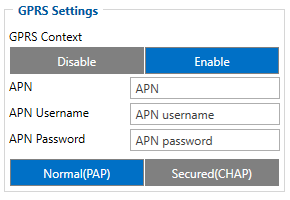
|
2001 | Access Point Name is a gateway between mobile operator and public internet.
It can be obtained from your SIM card provider. When correct APN settings will be entered device will connect to the internet. Note: we do have an auto APN functionality, which is described here |
| 2003 | APN password (if there are no APN password, empty field should be left) | |
| 2002 | APN username (if there are no APN username, empty field should be left) | |
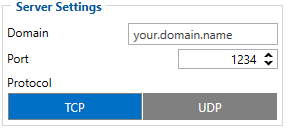
|
2004 | Domain/IP of destination server |
| 2005 | Port of destination server | |
| 2006 | Data sending to destination server protocol (0 – TCP, 1 – UDP) |
Note: If you do not have GPS tracking service yet, you can use Teltonika TCP/UDP listener to receive data from the device and Teltonika parser to parse received information. Software can be downloaded from here. Archive password: 1234
If you do not want to configure your device via configurator, you can quickly set up your device GPRS settings by sending this SMS command to it:
" setparam 2001:APN;2002:APN_username;2003:APN_password;2004:Domain;2005:Port;2006:0"
Note: Before SMS text, two space symbols should be inserted.
After successful GPRS/SERVER settings configuration, device will synchronize time and update records to the configured server according to the Data Acquisition time intervals. Default configuration has optimal parameters present to ensure best performance of track quality and data usage. However, for testing, we do recommend these Data Acquisition settings:
| Illustration | Parameter ID | Description |
|---|---|---|
| 10000 | Min period indicates time interval in seconds in order to acquire new record. | |
| 10004 | Min Saved Records defines minimum number of records in one data packet that can be sent to server. | |
| 10005 | Send Period indicates time interval in seconds after which device checks whether it has generated enough records based on Min Saved Records parameter. If enough records are generated, device will send them to server. If interval is set to 0 seconds, device will not send any records to server.
|
Device will generate periodic records and send them to server based on Data Acquisition settings.
Using these settings, the device will make a periodic record every 30 seconds and will send it every 30 seconds
After testing, Data Acquisition settings should be configured according to your needs.
The device will switch operating mode between On Stop and Moving based on configured corresponding movement source status.
More details about devices configuration using Configurator and more information about your particular device can be found Teltonika WIKI documentation. Click on your device -> Configuration.
Mount the Device
Different types of devices have specific mounting instructions: some of them are simple plug-and-play, while other hard-wired devices require professional installation. Please find your specific device mounting instructions Teltonika WIKI documentation. Click on your device -> First Start -> Mounting recommendations and precautions.
Installation instructions
Tracking the Device
Last but not least step for Basic Testing would be to get data/track from your device.
This can be done by using either simple TCP/UDP listeners or pre-made tracking platform like listed here.
Below you can find steps on how to setup simple TCP/UDP listener on your personal computer.
- Open TCP/UDP port
- Go to Java Parser First Start Guide
Below you can find pictures of how the track looks on different pre-made tracking platforms:
Advanced Testing
In this chapter we will review advanced device functionalities to get the most out of your Teltonika Telematics device. We will go through some of the specific, widespread use cases, however, keep in mind that device scenarios are not limited to just that. Available device functions can accomplish much wider range of application scenarios, which will be limited only by your imagination!
Advanced SMS capabilities
Teltonika devices have broad SMS usage spectrum including advanced device configuration and debugging. A full list of SMS commands can be found here.
For example, one of the most widely used SMS command for configuring the device is "setparam". Below you can see a description of this command:
Setparam changes parameter value. Command structure is: "<SMS_Login><Space><SMS_Password><Space>setparam<Space>[Parameter ID] : [New Parameter Value] ; [Parameter ID] : [New Parameter Value]..." Parameter ID consists of 3 or 5 digits. A detailed list of parameters and identifiers can be found here.
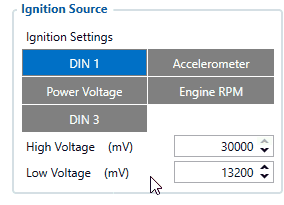
|
You can also find parameter ID by hovering mouse pointer over specific parameter in configurator. |
SMS command is limited to 160 characters.
Example:
"setparam 101:1" will change ignition setting to "DIN1".
Answer:
"Param ID:101 Value:1"
Example:
"setparam 101:2;138:1" will change ignition setting to "Accelerometer" and movement source to "Ignition"
Advanced Use Case configuration
Our devices can be as simple or as complicated as you want them to be. Having one firmware and one configurator for all the devices allows different devices to be used in a broad spectrum of use cases. Other use cases have specific devices assigned.
To show how easy it is to use our devices in different use cases we prepared a technical description of what steps are needed to integrate our device into your use case.
Each category explains what parameters have to be configured and why as well as showing examples of what information you should expect on your server and how to read it.
General use case descriptions, an overview of the most commonly used solutions, their topologies, and possibilities, provided on the Teltonika website USE CASES.
Specific technical use case instructions can be found here.
Solutions
In this section we will get acquainted with our most useful and simple to utilize solutions which will provide remote access, management and control of your device as well as external devices like tachograph.
FOTA WEB
FOTA WEB – a brand new and exciting solution for remote access to your Teltonika Fleet management devices! FOTA WEB enables firmware upgrades, configuration changes, remote device debugging of FMx devices, as well as CAN adapter updates without a need of a dedicated application – everything is achieved through your regular Web browser, from any device. By default device connects to FOTA WEB every 720 minutes (parameter is configurable). For more information click here. If you would like to have your own FOTA WEB account, please contact your Sales Manager. Short video about FOTA WEB.
Moreover, we also have a desktop FOTA solution: desktop FOTA is predecessor of FOTA WEB, which is mainly used for updating EOL (End-Of-Life, - FM5300, FMA120 etc.) devices. We strongly advise to use our newest FOTA WEB platform for OTA changes.
Note: FOTA WEB meets all GDPR requirements thus we do not store, track or analyze your personal data.
WEB Tacho
Teltonika WEB Tacho is an online service that allows to remotely download Tachograph files from supported tachographs, using Teltonika professional trackers. Files are stored on server, in defined format (.DDD, .V1B, .C1B, .TGD). Files can be downloaded – directly from the website, receive in Email, receive to defined FTP server. For more information click here. If you would like to have your own WEB Tacho account, please contact your Sales Manager.
Protocols
Our devices communicate using unique Teltonika's protocols. Protocols are applied for different usage scenarios using Codecs. Each Codec has its own structure and application scenario. A codec is a device or computer program for encoding or decoding a digital data stream or signal.
Data sending protocols
Each Codec used by Teltonika devices has different purpose. For example, Codec 8 Extended is main FM device protocol used to send data to server, while Codec 12 is used for device-server communication using GPRS messages. All information about Teltonika's communication protocols used by FM devices can be found here.
Protocols implementation
TCP/UDP listener and AVL Records parser, which source code could be used as a template for developing your own server, can be helpful for implementing protocols. A full software pack can be downloaded from here. Archive password: 1234.
Each device I/O parameter has its own unique ID, which is called AVL ID. Once the TCP/UDP listener and AVL Records parser are implemented, received AVL IDs descriptions can be checked in the AVL ID list page for your specific device (for example: FMB120 ).



